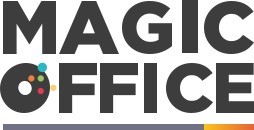The Rise of Collaborative Tech Tools in NZ Workspaces
Empowering Teams with Collaborative Digital Solutions
The landscape of New Zealand's office environment is undergoing a monumental shift, with collaborative tech tools taking center stage. The key to revolutionizing team efficiency rests in the palm of our hands—or rather, at our fingertips—through innovative software that enhances communication and project management. In New Zealand's progress-oriented workspace, tools like Asana for task management, Slack for instant communication, and Trello for project tracking have become indispensable.
The integration of such tools has seen a remarkable improvement in team synergy and project turnaround times. Statistics show that the use of collaborative technologies can increase team productivity by up to 20-30%. Furthermore, these smart solutions are not just for large enterprises. Small to medium-sized businesses in New Zealand are also rapidly adopting these platforms, recognizing the competitive edge they provide.
Connecting Remote and Office-based Teams Seamlessly
In today's world, the ability to pivot between office-based and remote work has become crucial. The adoption of cloud-based collaboration platforms is empowering NZ offices to maintain a consistent workflow regardless of location. This strategic flexibility, which is further explored when discussing adapting office protocols, ensures teams can collaborate effectively whether they're in the boardroom or utilizing home offices.
As businesses adopt a more holistic approach to office work, integrating these technological advancements allows for a tailored approach to productivity. By customizing how and when to use these digital tools, office managers are seeing an uptick in work output and employee engagement.
Enhancing Cross-departmental Collaboration
The emergence of integrated software ecosystems is reducing the friction that typically exists between different departments. By using these tech tools, information silos are dismantled, paving the way for transparent and fluid communication across all levels of a company. As we delve into breaking down hierarchical barriers, it's clear that these collaborative platforms are the linchpins in promoting a flat management structure, allowing for a free exchange of ideas and fostering an environment of innovation.
In conclusion, New Zealand companies implementing these forward-thinking tools are creating a more dynamic and responsive work environment. Office managers are at the forefront of this change, enabling their teams to achieve unprecedented levels of efficiency and productivity. This is just the beginning—as we explore innovative performance metrics and productivity systems, the potential for office management in New Zealand is boundless.
Strategic Flexibility: Adapting Office Protocols for Maximum Output
Embracing Adaptability for Peak Performance
In the bustling office environments of New Zealand, office managers are discovering the power of strategic flexibility. What does this mean in practice? It means tailoring workflows and communication channels to match the dynamic nature of today's marketplace. This involves a willingness to embrace change and implement office protocols that are not only sustainable but also maximize output.
Creating a work environment that can adapt to varying workloads, client demands, and employee needs is crucial for keeping a competitive edge. Office managers are finding that when they delegate with agility and utilise tools that allow for real-time collaboration and problem-solving, they see a marked improvement in productivity. For instance, adapting work schedules to include hybrid work models or flexible hours can lead to a happier, more productive team.
Optimizing Office Dynamics for Enhanced Results
Another facet of strategic flexibility is optimizing the physical and virtual workspaces. Smart office layouts that encourage movement and interaction can foster creativity and reduce fatigue. Additionally, the integration of virtual workspaces that are well-organized and easy to navigate ensures that remote team members are just as engaged and able to contribute as those in the office.
By using analytical tools and feedback systems, office managers can fine-tune these environments to better suit the teams that occupy them. According to a study by Deloitte, companies that prioritize inclusive workspaces see up to a 30% increase in team performance. Office managers are taking notes and designing offices with zones for collaboration, concentration, and relaxation, seeing a direct correlation with enhanced team efficiency.
Cultivating a Progressive Office Culture
The culture within an office is the invisible hand that guides efficiency and output. Office managers are the custodians of this culture, and they play a key role in guiding it towards a progressive and inclusive future. Encouraging open communication, recognizing achievements, and supporting professional development are just a few strategies that are being employed.
By fostering a culture where innovation is rewarded and failure is seen as a learning opportunity, office managers are unlocking the true potential of their teams. As workplaces in New Zealand continue to evolve, those who are quick to adopt these adaptive and employee-centric approaches will lead the way in revolutionizing team efficiency.
Unleashing Potential with Customized Productivity Systems
Customizing Productivity Tools to Transform Office Dynamics
In today's competitive business environment, tailoring productivity systems to meet the specific needs of your team is not just an advantage; it's a necessity. Incorporating bespoke productivity tools within the fabric of New Zealand's office management strategy is pivotal for enhancing team performance and driving innovation. Customization goes beyond mere preference; it caters to the individual working styles of employees, fostering a culture where each member's potential is fully realized.
Personalizing Task Management for Peak Performance
In the realm of productivity, one size does not fit all. By establishing personalized task management systems, office managers can empower their staff to operate at their peak efficiency. Detailed analytic insights—surfaced by cutting-edge software—can guide the development of tailored task lists, reminding teams of priority items while still providing the flexibility to manage their workload in a way that aligns with their individual competencies and schedules.
- Define clear and attainable goals for different team roles.
- Implement intuitive software that learns and adapts to team preferences.
- Utilize automation to streamline repetitive tasks and free up creative potential.
The Synergy of Cross-Functional Collaboration Tools
The fusion of collaboration and productivity is not an abstract concept but a tangible reality within the modern office setting. Integrated project management platforms enable cross-functional teams to thrive, eliminating silos and fostering a transparent work environment. These platforms not only enhance communication but also provide insightful metrics that inform necessary adjustments for maintaining an agile and responsive workflow.
Mobilizing Teams with Agile and Scrum Methodologies
Introducing Agile and Scrum methodologies can revolutionize the office landscape. By focusing on iterative progress, these frameworks encourage teams to remain adaptable to change, continuously improve processes, and swiftly react to feedback. Leaders in New Zealand are recognizing the potency of these approaches, implementing stand-up meetings, sprints, and retrospectives to refine the collective effort and achieve remarkable outcomes.
Smart Tools Elevate Office Ecosystems
Technology is the cornerstone of an effective, customized productivity system. Smart scheduling apps and AI-driven analytics are more than just flashy tech—they are the critical components that grant teams the freedom to excel. These smart solutions can intelligently anticipate needs, prompt timely breaks for wellness, and suggest optimizations for workflow, decidedly propelling New Zealand's workforce towards a future where peak productivity is the norm.
Breaking Down Hierarchical Barriers with Flat Management
Embracing a Culture of Equality in the Workplace
In the dynamic office environment of New Zealand, removing traditional hierarchies can pave the way for more collaborative and engaged teams. By breaking down hierarchical barriers, office managers encourage open communication and idea sharing, key aspects that drive innovation. The approach, often labeled as 'flat management', thrives on the premise that all team members have valuable insights, regardless of their position in the company. This egalitarian culture not only boosts morale but also accelerates problem-solving and fosters a sense of community within the office.
Leveraging Flat Management for Enhanced Agility
The adoption of flat management structures has been on the rise among New Zealand businesses seeking agility and faster decision-making. In a flat management system, managers and employees operate on a more equal footing, which can result in quicker consensus and implementation of ideas. This approach also reduces the 'red tape' that often hampers swift action, making the office a more responsive and adaptable environment. With reduced layers of hierarchy, office managers can efficiently implement collaborative tech tools and adapt office protocols to increase overall productivity, as previously discussed.
Developing Cross-Functional Teams
Office managers who advocate for flat management also champion the development of cross-functional teams, where employees with various expertise collaborate on projects. This strategic move not only optimizes skill sets to achieve specific objectives but also enriches the professional experience of the team members involved. A diversity of perspectives often leads to a more holistic approach to problem-solving and innovation. Furthermore, it can facilitate the customization of productivity systems, enabling teams to tailor their workflows to their unique needs, thus maximizing output and efficiency.
Implementing New Leadership Approaches
In the flat management model, leadership is no longer about command and control but about guidance, support, and enabling others to take initiative. Office managers in New Zealand are adopting leadership styles that empower their team members. By doing so, they are not only investing in the growth of individuals but also ensuring the long-term health and competitiveness of their organization. Moreover, forward-thinking office managers are applying innovative performance metrics to assess their teams, focusing on collaboration, creativity, satisfaction, and contribution levels instead of traditional productivity measures alone.
Conclusion
The shift to flat management structures in New Zealand's corporate landscape represents a transformative period for office managers. It's a leap towards establishing transparent, empowering, and efficient work cultures. By embracing these changes, office managers are setting their teams up for unprecedented levels of success and satisfaction, marking a new frontier in the quest for peak organizational performance.
Measuring Success: Innovative Performance Metrics for NZ Teams
Innovative KPIs for Enhanced Office Management
In today’s performance-driven workplace, innovative Key Performance Indicators (KPIs) are paramount for NZ office managers striving to track and elevate team efficiency. By leveraging data analytics, managers can craft personalized benchmarks that reflect the unique goals of their teams, integrating insights from collaborative tech tools and productivity systems mentioned earlier. Gone are the days of one-size-fits-all metrics; today's NZ companies embrace KPIs that foster growth, learning, and continuous improvement.
From Output to Outcome: A Shift in Performance Metrics
The frontier of office management is seeing a significant shift from solely output-focused metrics towards outcome-based measures. Office managers are now recognizing that the value created for customers and stakeholders goes far beyond the number of hours worked or tasks completed. Assessing the quality of work and its impact can give a more comprehensive picture of a team’s true performance, a recurring theme across the strategic changes in the office environment.
Quantifying Collaboration and Innovation
Quantifying how well a team collaborates and innovates is an essential part of today’s office management assessment. In addition to conventional productivity metrics, pioneering NZ office managers are developing ways to measure the effectiveness of cross-functional teamwork and the rate of innovation within their teams. This approach acknowledges the importance of synergetic dynamics amongst team members, fostering an ecosystem that supports shared success and thought leadership.
Use of Real-Time Analytics for Proactive Management
Real-time analytics have become a game-changer for office managers. The ability to access up-to-the-minute data enables proactive responses to emerging trends and challenges, allowing managers to pivot strategies swiftly for optimized team performance. Utilizing tech tools, such as the collaborative platforms discussed earlier, managers can gather valuable insights into employee engagement, workload distribution, and process efficiencies.
Embracing Feedback Loops for Performance Enhancement
Feedback is a powerful tool for performance enhancement. Modern performance metrics in NZ now often incorporate feedback loops that encourage open communication and continuous dialogue between managers and team members. This strategy aligns with the move toward flat management structures, creating a more democratic and inclusive working environment where every voice can contribute to the company’s success. By continually refining their approach and utilizing the full suite of available tools and strategies, NZ office managers can create a robust framework for measuring and boosting team success. These metrics not only serve as a means for assessment but also as a catalyst for driving innovation and maintaining a competitive edge in the dynamic NZ market.













